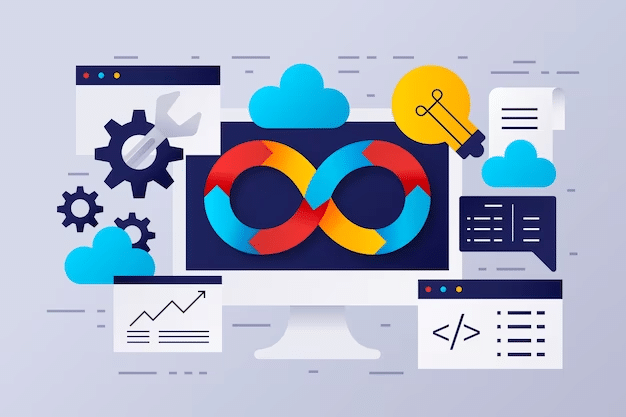Bringing in external experienced engineers is an excellent way to begin thinking and acting in the DevOps paradigm without investing a lot of time or money. Engineers working on the same team as you will assist in generating synergy between the development and operations teams.
Learn about DevOps benefits for business and how implementing DevOps can save you time, money, and other resources. Your developers will be satisfied and your customers will be happy.
- Fewer software failures due to differences in infrastructure configurations
The DevOps engineer creates an identical work environment for all participants in the software lifecycle by implementing the Infrastructure as Code (IaC) model. As a result, it is possible to avoid situations where the software runs in a test environment, but strange errors appear at the production stage.
- Rapid provision of new infrastructure
This is another advantage of the IaC approach: the process of setting up infrastructure is similar to the process of programming software. There is no need for manual configuration and updates. The infrastructure exists in the form of ready-made code and becomes scalable, which reduces waiting time.
- Ensure business agility
The DevOps lifecycle delivers near-instant input, allowing teams to operate more freely. As part of the DevOps technique, feedback loops are embedded into the pipeline and play an important role in the sprint planning process.
This procedure shields the team from external issues, which can slow down most projects. More substantial and unanticipated challenges develop over the project’s life cycle, such as market instability, changes in regulatory requirements, or competitor activities. All of these might cause the project to be delayed or even halted. Such challenges are foreseen and built into day-to-day routines in DevOps.
Maintaining a competitive edge requires the capacity to alter your plan and adapt fast to many events that may arise, and DevOps provides you with the flexibility to do so.
- Encourage collaboration and preserve trust
Your work culture is a direct reflection of the structures and procedures you employ.
The most significant advantage of DevOps over Lean and Agile techniques is the potential to reduce silos across departments like development, operations, security QA, and even data analysts or artists and designers. To do this, cross-functional teams with diverse expertise and shared objectives are formed.
One of the primary advantages of DevOps is the emphasis on cooperation and shared accountability across all teams. This method promotes a pleasant, open, and transparent atmosphere throughout the business by establishing goals and applying shared tools and practices. When everyone is working toward the same goal (creating customer value), it is simpler to make choices, react to change, and collaborate successfully as a team.
- Automation drives innovation
A manual procedure is poor.
DevOps automation reduces tasks that used to take hours to seconds. This is accomplished through continuous integration (CI), in which work results are given numerous times per day in tiny, regular batches via automated processes.
The continual flow of delivery accelerates feedback loops. The more frequently you deploy updates, the faster and easier it will be to detect and repair errors, reducing the number of issues that cause delays in your project’s delivery.
DevOps technologies, such as Automated Build tools or version control systems with automatic code merging, eliminate human chores from the process. This provides the team more time to focus on new ideas while decreasing the requirement to fix issues. Teams are free to experiment and address consumer demands when they collaborate well, have common goals, use a few manual procedures, and receive feedback quickly.
- Significantly cut expenditures
One of the basic ideas of DevOps is to strive for continuous improvement through frequent deployment, as well as to leverage feedback loops at all stages of the DevOps lifecycle. This increases production, lowers costs, and improves delivery times.
The DevOps approach lowers expenses by minimizing network downtime. Downtime is extremely expensive, particularly when preparing for a launch. Continuous integration (CI), continuous deployment (CD), and automated testing help development teams generate better code by catching and fixing errors early in the process.
DevOps and automation also assist in accelerating release cycles and delivering many deployments per day, which were previously done manually. This enables even small teams to operate like huge studios, lowering expenses and streamlining operations.
